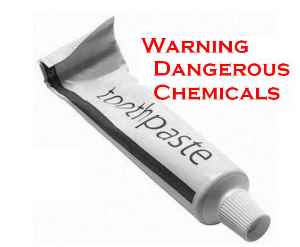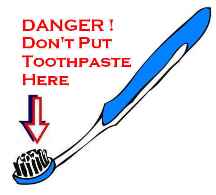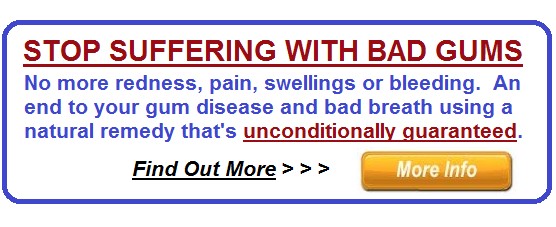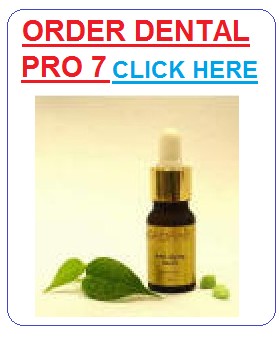“If Everyone Knew Exactly What They Were Scrubbing Over Their Teeth and Gums Twice a Day – There Would Be a Stampede Toward Natural Toothpaste Replacement Products – Such As Dental Pro 7“
![]()
We reach for that tube of toothpaste without
thinking at two of the sleepiest times in our day
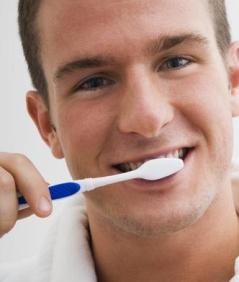
Good Morning
![]()
1) First Thing In the Morning
I don’t know about you, but early in the day – while bleary eyed and struggling to make sense of the world, I used to reach without thinking for my trusty toothpaste and brush.
Your morning routine may be different, but I’m sure you also don’t stop to question what’s in that blob of toothpaste you’ve just squeezed onto your brush. Neither do you, as you scrub this product vigorously over your teeth and gums.
2) Last thing at Night
The day’s over and the last thing on your mind is the contents of your toothpaste. Like most people, you probably slip into bed with the reassuring minty taste of toothpaste still lingering on your tongue, content that you have done the very best for your teeth and gums that day.
Yes sir! Those toothpaste people have us over a barrel alright!
In our early trusting years we started using regular fluoride toothpaste because our parents and dentists steered us towards the same toothpaste products that they use and recommend.
As we grew up we were influenced by the glossy advertising campaigns in magazines and on radio and TV. And we treat our toothpaste a bit like we treat our banks . . . when we find one we like, we tend to stick with it.
![]()
The Media Tells Us Tothpaste Is “Great” – but . . .
On TV, radio and all over the mass media, toothpaste is always shown as a great happy product that keeps the whole family safer, brighter, fresher and healthy-looking.
You never see the models in toothpaste ads when they’re not smiling.
But none of those white smiles are natural. Those sparkling teeth have all been professionally bleached. So you could say the ads are an unfair respresentation of what toothpaste can really do for you.
And Why Do They Never Mention Gum Disease?
If regular toothpaste products are so good – and everyone’s using them – how come very large numbers of adults around the world are suffering from gum disease and bad breath?
Could it be that the over-hyped toothpaste product you’re using provides little real help to boost your oral health?![]()
“If You Knew what Was In Your Toothpaste You Might Want to Think Again About What You Put On Your Toothbrush”
![]()
Just Imagine This For a Moment
You have Gum Disease. Your gums have lost their usual pink healthy color and they are red and painful. You have noticed some swelling when you brush your teeth.
You are alarmed to see blood in the wash-basin when you spit.
Forget for a moment how your gums got like that in the first place – but clearly weren’t helped at all by the toothpaste and mouthwash products you have been using!
Now take a look at the ingredients listed below (it’s only a partial list) and ask yourself whether you feel comfortable scrubbing these chemicals over your damaged gums.
This Is What Your Dentist Recommends
The regular toothpastes you buy over the pharmacy counter is likely to contain the following groups of chemicals.
(This is not an exhaustive study of the chemicals in toothpaste but is intended as an indication of the chemical complexity and potential for harm lurking in most regular toothpastes)
Detergents (also called Surfactants)
(Surfactants are used in Fabric softeners, Paints, Adhesives, Inks, Ski wax, snowboard wax, De-inking of recycled paper, Laxatives, Agrochemical formulations, Herbicides and some Insecticides).
A detergent found in most brands of toothpaste is:
Sodium Lauryl Sulfate (SLS).
This chemical is added to toothpaste to give you a mouthful of bubbles. Foam is good for marketing because we associate foam with “clean”.
If your mouth foams it must be clean – right?
If you Google “Sodium Lauryl Sulfate” you’ll find out it’s an industrial chemical that is used by scientists in laboratory experiments. It’s frequently employed as a skin irritant in tests.
SLS’s foamy cleaning properties are very useful in industry too. The same SLS makes the foam that cleans the bugs and road grime from your car in your local carwash.
Imagine heavy machinery in a factory. These machines need a lot of grease and oil to reduce friction so they don’t seize up while operating. That grease and oil slops all over the place – so at the end of the day they use SLS to de-grease the machinery.That’s the same chemical that’s foaming up your toothpaste.
Fluorides
Fluorides are a complex group of chemicals you could write a book about.
In the USA and other countries with centralized water supplies, the authorities controversially add it to the drinking water and it’s considered to be a sensible contribution to help slow down tooth decay by hardening tooth enamel.
Fluorides are also routinely added to toothpaste and all this ‘compulsory’ healthcare has some strong critics.
There are many tales of people getting too much of this chemical in their body and suffering the consequences. Young children (between 1 and 4 years old) can get Fluorosis – a health condition characterized by black and brown stains, as well as cracking and pitting of the teeth. It’s caused by receiving too much fluoride during tooth development.
A tube of regular toothpaste is reckoned to contain sufficient fluoride to kill a small child within 2 to 4 hours. There are also serious concerns that large doses of fluoride may cause paralysis, muscular weakness and colonic convulsions, followed by respiratory and cardiac failure.
What the long-term use of this chemical might do is open to much speculation, but it’s interesting to note they also use fluoride in the manufacture of rat and cockroach poisons as well as being a key constituent of Sarin Gas.
Maybe it’s not the wonder ingredient we are led to believe!
Abrasives
These are rough, gritty additives in toothpastes designed to help scour teeth and aid removal of tartar and plaque:
• Silica is a derivative of sand and is naturally extremely abrasive. It has been a component of toothpastes for decades and although its action is very rasping against tooth enamel and gums it is not considered toxic.
• Hydrated Silica (also used in flame retardants, paints and varnishes) is an artificial silica manufactured for use in gel toothpastes due to its transparent nature. It is a bio-accumulator which means it can accumulate in the body over time. It is listed by the US Food and Drug Administration as “Generally Recognised as Safe”.
• Calcium (chalk) An abrasive added to many toothpastes in the form of calcium salts. It is generally considered safe.
While gritty abrasives appear to be a good way of removing deposits from your teeth it does seem a bit like cleaning your windows with sandpaper.
Saliva Inhibitors
Tetrasodium Pyrophosphate (TSPP) is added to some toothpaste to remove calcium and magnesium from the saliva. This is supposed to reduce plaque build-up.
TSPP is unpleasant tasting and the flavor is masked with other additives. This chemical is used as a water softener and is rated as moderately toxic by Toxnet.
Triclosan is another chemical added to toothpaste to inhibit plaque formation. Triclosan is listed as a bio-persistent chemical which regularly shows up in fish, breast milk and waste-water.
Bleach
Hydrogen Peroxide is in the list of contents of most toothpastes that claims to whiten teeth. There are well documented health concerns with the safety of this chemical.
Informed clinical studies have flagged potential health concerns from long-term oral use of this chemical bleach. Any concentration stronger than 0.1% should be available by prescription only.
hydrogen peroxide is also classed as a weak carcinogen (cancer inducing).
Some toothpaste with -whitening qualities may contain Sodium Hydroxide (Caustic Soda).which is considered a moderate hazard.
Stabilizers and Bulking Agents
Polyethylene Glycol (PEG) and other polymers are found in many toothpastes where they are used as as a dispersant; they bind water and help keep gum uniform throughout the product. There are some health concerns with Polymers including cancer, allergies/immunotoxicity and organ system toxicity.
Other Chemicals Found in Toothpaste
Methylparaben which belongs to one of the main toxic-chemical groups that you would do well to avoid.
The parabens – Ethylparaben, Methylparaben, Butylparaben and Propylparaben – are often added to toothpaste to give the product a longer shelf-life and to keep the consistency of the toothpaste the same all the way though as well as making the product feel nice in the mouth.
Yellow 10 Aluminium Lake and other Coloring agents are understood to have health concerns against them. They are being monitored for potential harm in long-term use.
As mentiones above, Sodium Lauryl Sulfate and other surfactants are well-known asskin irritants and not the sort of chemical to spread on tender mouths and gum tissue. Allantoin which is considered to be harmless, is often added to soften the irritating effects of these chemicals.
Flavourings and Fragrances – both natural and artificial- are principally added to mask the unpleasant flavors of the addedchemicals.
Although this is an incomplete list – it gives you a flavor of the diversity of conflicting chemicals used in toothpaste.
Buy Natural Dental Pro 7 Made From Pure Essential Oils
During the time I suffered from chronic Bad Breath and the early stages of Gum Disease, I researched a good many oral care products. I found that everything I tried made no difference.
Chances are you’re still using a proprietary brand of toothpaste you buy automatically year after year. I recommend ou change to Dental Pro 7 and banish your Gum Disease and Bad Breath once and for all.
Go to the Dental Pro 7 website to learn more – read customer testimonials – and place your order by clicking here > > > Dental Pro 7 Website
I wish you great health.
![]()
